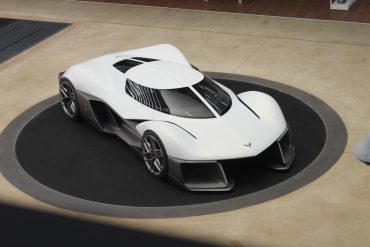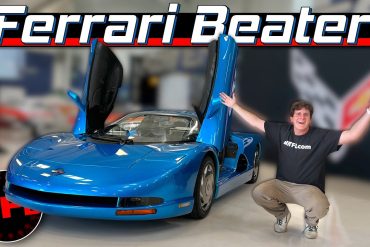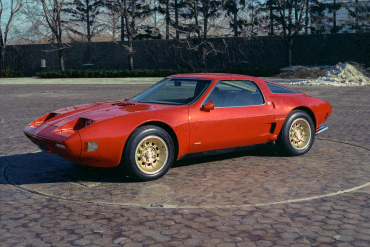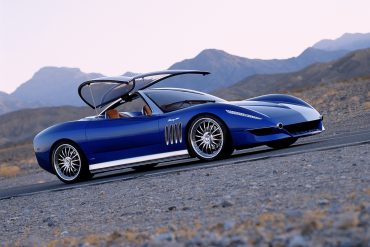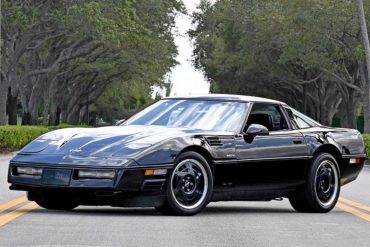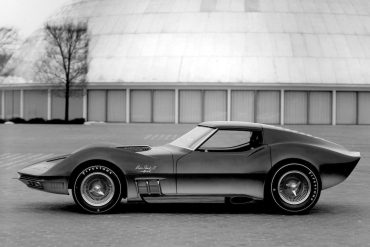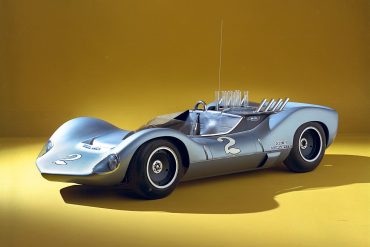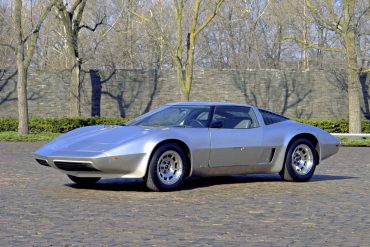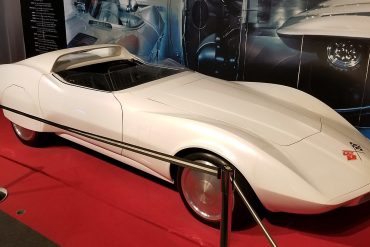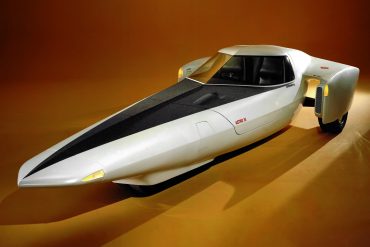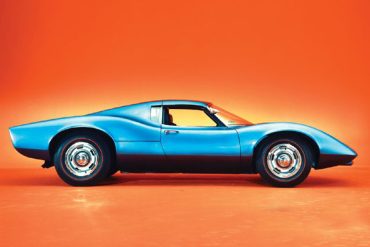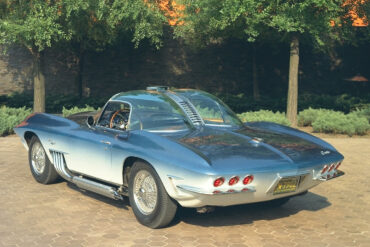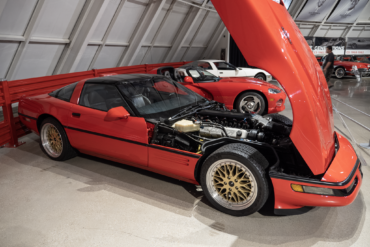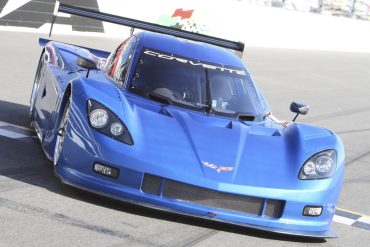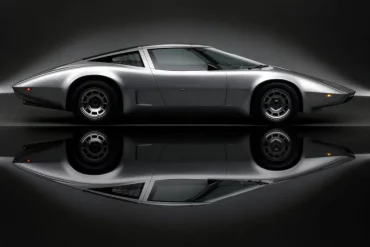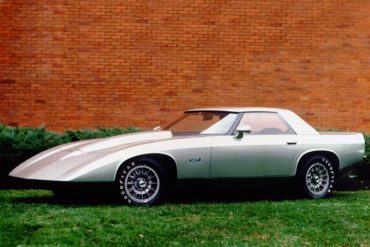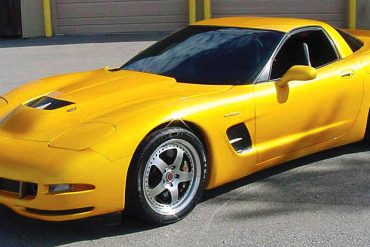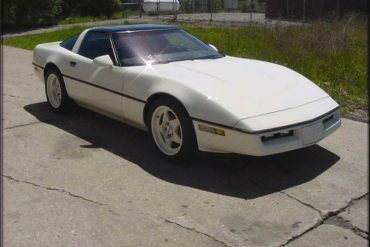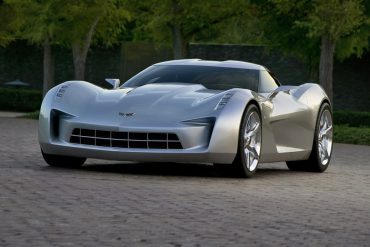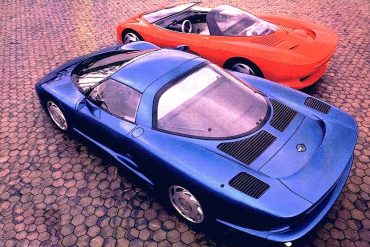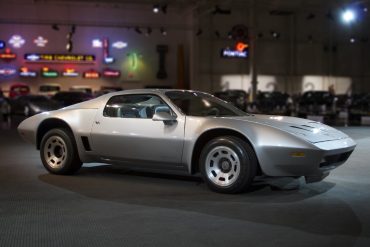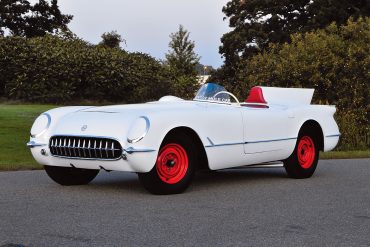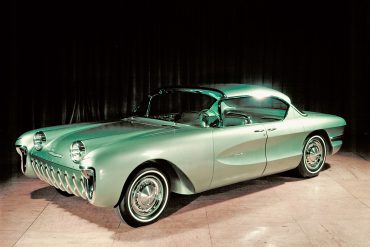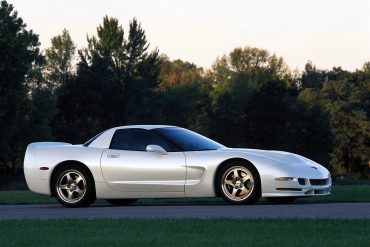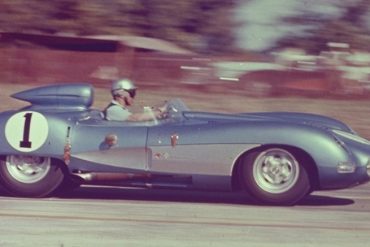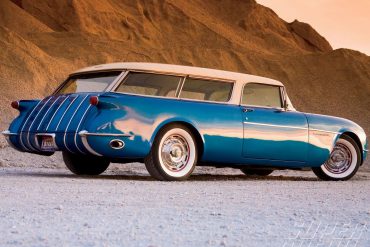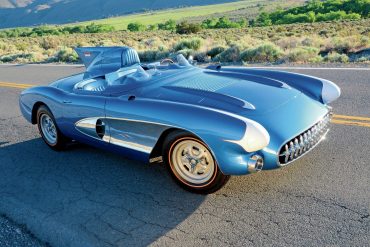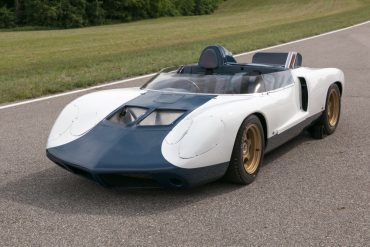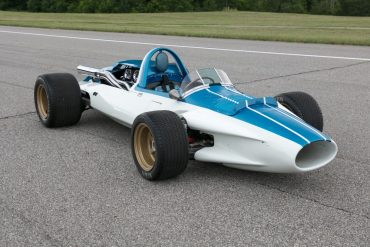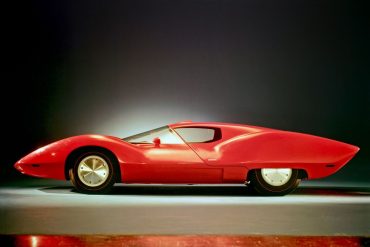The Corvette has always been a symbol of American performance. It all began in 1953 with the C1—a curvaceous, fiberglass-bodied...
In January 1990, Chevrolet unveiled the CERV III (Chevrolet Engineering Research Vehicle No. 3) at the Detroit International Auto Show....
This little concept mounted a 180-horse Wankel transversely, driving a new automatic transaxle being developed for the forthcoming X-body Citation. Designed by GM's Experimental Studio and built in 6 months on a modified Porsche 914 chassis by Pininfarina, the 2-Rotor made its debut at the 1973 Frankfurt show.
The Moray project, presented for the first time at the Geneva Motor Show on March 4, 2003, embodies the homage that Giorgetto and Fabrizio Giugiaro wish to pay to the fifty-year era of the Chevrolet Corvette, the supreme symbol of the American sports car. Touched by drifting tides with long and slender front lights, bringing immediately to mind the Moray, the English term for the eel-type fish, muraena helena, found in Mediterranean waters.
This vehicle pioneered the advantages of “Active Suspension” and had GTP Corvette race car technology. Built at the Bowling Green Plant, this vehicle was developed as a prototype for a limited edition run in the 1990 model year. Chevrolet ordered it to be built with a complex, high-tech active suspension that includes an Eaton hydraulic pump and Moog actuators. This car and the technology inside of it led to the Active Handling system GM released in 1996.
The Mako Shark II was a radical concept that shaped Stingray years later. While showcasing distinct design cues, the Mako Shark contained many notable features for 1965. It had a one-piece front-end that hinged forward for access to the engine bay, a removable hardtop, knock-off aluminum wheels and a big-block 427. Chevrolet received overwhelming requests to have it produced.
The GS II (Grand Sport II) was a test vehicle completed in late 1963 by Chevrolet Engineering Center (C.E.C.). The chassis was constructed of spot-welded sheet steel and was fitted with narrow tires. With only minor testing done at GM’s test facility in Michigan, the vehicle was shipped to Texas to the Chaparral Cars test facility.
One of the most beautiful concept cars created by GM was the XP-822 later called the Aerovette. Zora Arkus Duntov and his engineers had originally built two predecessors during 1969. John DeLorean, Chevrolet's general manager, felt the program was too expensive and canceled the car.
The Astro II was one of the most significant case studies of Duntov’s outright refusal to let his mid-engine dreams die, and as such, ultimately entered the history books as a precursor to the eventual mid-engine, C8 Corvettes of today. The Astro II was designed in a way that was more representative of the Corvette’s typical styling cues, than that of The Astro I.
Though the first two prototype cars to carry the Astro namesake were relatively well known, the third entry in this conceptual saga was somewhat obscure and significantly more bizarre. At the 1969 Chicago Motor Show, Chevrolet unveiled the Astro III which was a gas-turbine prototype that featured a tricycle wheel arrangement.
The Astro II was one of the most significant case studies of Duntov’s outright refusal to let his mid-engine dreams die, and as such, ultimately entered the history books as a precursor to the eventual mid-engine, C8 Corvettes of today. The Astro II was designed in a way that was more representative of the Corvette’s typical styling cues, than that of The Astro I.
The XP-755 was designed and the prototype was built in the beginning of 1961. Bill Mitchell was very excited about the double-bubble roof, the side exhausts and rear. It is equipped with a single four-barrel carburetor that produces upwards of 425 horsepower. The Corvette XP-755 Concept had a streamlined design, pointed snout and outlandishly future looking elements everywhere. The 1961 Mako Shark I (XP-755) was an early concept.
The Corvette team decided to one-up the Viper with four extra cylinders, they decided on one of Ryan Falconer’s stunning, all aluminum, 600-cubic-inch, 683hp, 680 lb-ft V-12 racing engines. The biggest challenge was the fact that the all-aluminum V-12 engine was 8.8-inches longer than the production Corvette engine. So the front end of the ZR-1 would have to be stretched 8 inches. This test car was named Conan, after his raw, beastlike charisma.
For the 2012 Grand-Am season, Chevrolet was the first to unveil it's new DPG3 bodywork. This Corvette body kit will be built by Pratt & Miller and will be sold to customer teams. These body kits will fit on any existing Coyote, Riley, or Dallara chassis. This Corvette DP will be powered by a 5.0L V8 making 530BHP @ 7,000rpms and 450ft-lbs at 5,500rpms.
In 1977, GM chairman Thomas Murphy gave the Aero-vette the green light. It was approved for production, and slated to be released in 1980. Despite being greenlit for 1980 production as the upcoming C4 Corvette, Arkus-Duntov's replacement Dave McLellan decided for a number of reasons (cost and tradition among them) to stick with the Corvette's tried and true front-engine configuration
The 1973 Chevrolet XP-898 concept car was built with a frameless fiberglass foam sandwich body and chassis. This two-seater sports coupe offered a unique look at alternative engineering approaches to future techniques in design and manufacturing. The entire body consisted of four lightweight fiberglass outer body panels.
Chevrolet Corvette “Tiger Shark” Concept, 1997. A C5 Corvette powered by an alloy 742hp LS1 427ci supercharged V8. Other modifications included upgraded Brembo brakes, 18-inch Kinesis Motorsport K58 forged wheels and a hood dome to clear the supercharger. It was built by Detroit prototype shop Wheel-To-Wheel and sold for $112,200 in 2009 at the GM Heritage car auction.
In the late 80s, Chevy was developing what some dubbed a ‘Super Vette.’ But the 1989 debut of the Dodge Viper sent GM engineers on a new path to develop a ‘Viper-Killer.’ It started with a factory test mule and the experiment was to see how a ZR-1 would perform if given more power and less weight. It was so fast it was called "Snake Skinnner", for it's ability to beat the Viper and Cobra.
SIDESWIPE takes the form of a sleek, vision concept dreamed up by the Corvette designers at GM. The design is influenced by the original Stingray race car, introduced in 1959, but also draws on Corvette heritage cues from other generations. It brings them together in a futuristic shape that seems to be equal parts racecar and space ship.
While it was understood that the Corvette Indy Concept would never be fully realized as a production vehicle, it paved the way for the creation of the twin-turbo CERV III. The CERV III (Chevrolet Engineering Research Vehicle No. 3) was introduced in January, 1990 at the International Auto Show in Detroit, Michigan. Like the latter iteration of the Corvette Indy Concept car, the CERV III was fitted with a 5.7 Liter, 32-valve, dual-overhead cam LT5 engine that featured twin turbochargers. It had 650 hp and 655 lb/ft of torque and top speed of 225 mph.
The XP-895 was one in a series of experimental Corvettes built to explore alternative engine placements and chassis layouts. This vehicle features an 400 cid small block V8 mounted transversely in a mid-engine position. It utilizes a Turbo Hydramatic transmission via a bevel gear box. The body panels are all aluminum.
Built for outright top speed, this prototype Corvette was built by Zora Duntov. He successfully piloted the car to a two-way average speed of 150 mph in January of 1956 at Daytona. Later two more similar cars were built for the 1956 Daytona Speed Weeks in February. After initial resistance from Engineering, Duntov’s cam was delivered to the Proving Ground.
GM’s 1950s Motorama-mobiles were mostly pretty out-there, with flamboyant fins, rocket-inspired skegs and cockpits, and other flights of wild imagination. Frankly, many of them were a bit absurd and even childish. But there were a few that were somewhat down to earth, even rather brilliant, like this 1955 Chevrolet Biscayne.
"Hot" is an apt description of this special coupe's drivetrain. Its 6.6-liter engine produces 512 horsepower and 523 lbs.-ft. of torque. Mated to a four-speed automatic transmission and featuring a 3:41 geared limited slip differential and four-wheel independent suspension, this "Vette takes a backseat to no other vehicle. The White Shark Corvette also features power rack-and-pinion steering to precisely pilot this vehicle and four-wheel disc brakes with ABS.
The Corvette SS began life as an experimental race car, and was unveiled to the public at the 12 Hours of Sebring endurance race on March 23, 1957. The SS was in training for Chevrolet's debut at LeMans that year. The Sebring race was, in many ways, Chevrolet's inauguration into modern racing. But the SS never finished the race, much to the dismay of the racing community.
Carl Renner was responsible for the Nomad which was essentially a Corvette built with an extended station wagon roof. This meant the Corvette shared its lightweight fiberglass body, ‘Blue Flame’ inline-6 engine and curvaceous styling with the Nomad.
Designed mid-1956 for Harlet Earl’s son Jerry, the SR-2 was put into racing duty in 1957. The car debuted at Daytona Beach in 1957 with a high-speed canopy, fender skirts and bullet-shaped frond headlights. Driven by Betty Skelton and Buck Baker, the car won the modified class with an average speed of 93.074 mph. The SR-2 also finished second in class for the flying mile with a top speed of 152.886 mph.
The CERV II was entirely Zora’s car. The CERV II was conceived early in 1962 and developed over the next year, after the GS program was squashed. The car was built under Zora's direction between 1963-'64. Zora had it in mind to develop a separate line of racing Corvettes but the idea got terminated by management.
The “CERV-1” (Chevrolet Engineering Research Vehicle) was developed as a research tool for that company’s continuous investigations into automotive ride and handling phenomena under the most realistic conditions. The car was built at the Chevrolet Engineering Center at Warren, Michigan in a special project headed by Mr. Zora Arkus-Duntov, Chevrolet Staff Engineer.
Those that have laid eyes on the Astro I will not soon forget it. This 1967 Chevrolet prototype featured sleek body lines that embodied the feel of a far more aggressively styled Mako Shark. Although the Astro I was built with the intent to aid in the study of aerodynamics, no official documentation has been uncovered as to the results of this testing.


